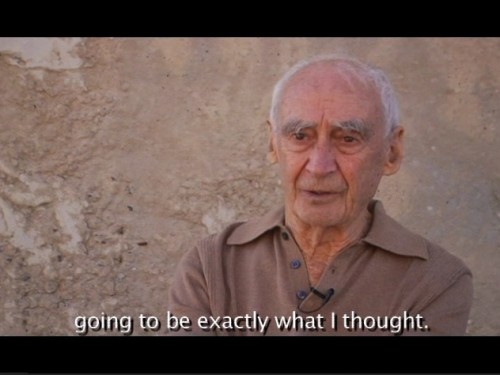As I was writing the How to Conduct an Interview posts (pt. 1 & pt. 2), someone posted a link on a documentary listserv I belong to, a link with tips on how to shoot an interview.
The tips are from Father Roderick, a Dutch Catholic priest with an interest in media new and old. Father Roderick is a blogger and podcaster and not that familiar with digital video. What inspired him to write his how-to was a trip to Rome where he was interviewing some folks in front of a camera. So his post is really from the point of view of a novice. And that’s fine. Seasoned cinematographer’s won’t find anything of use in it, but if you’re picking up a camera and interviewing someone for the first time, or if you’re doing some kind of project and want it to look “professional,” you might find some useful information here.
One of his tips brought a smile to my face.
Always look for depth in the image you are filming. Never place someone in front of a wall. Look for perspective. You want your images to have as much depth as possible.
Yes, this is what they tell you to do. But I happen to love the choice we (Wolfgang Held and I) made for the first on-camera interview with Paolo Soleri for A Life’s Work.
I love the background, the texture of the concrete, and the colors, all those browns and then Soleri’s white hair. I love that he seems to blend in with his structure, as if he and his building material of choice are inseparable. I couldn’t have planned a better looking shot.
And honestly, we didn’t. We wanted to shoot outside but many locations were too noisy or too trafficked. We settled for a bench near the amphitheater. We didn’t have much time and I had to make a quick decision. If I had the time to think about it and if we had other options, I would have nixed this spot. All of the reasons I love the shot would have been the reasons not to shoot there, including the lack of depth of field.
But I doubt those other options would have said as much as Soleri against that background — “in front of a wall” — does.
I guess the moral of this post is all how-tos and tips are guidelines. Learn them, employ them, but don’t be afraid to deviate from them.
So endeth today’s reading.
Hello? Anyone out there want to share their “how to shoot an interview” tips?


Robert
I’m a TERRIBLE photographer, but a reasonably good interviewer. WHERE you place someone for an interview matters. Obviously we both have to be mindful of the ambient sound and other distractions. But I haven’t thought much about the aesthetics of an interview. How that impacts the quality of what you get. In the past, I’ve tried to put my interviewees in a place where they felt safe (their home, their office, the site of their greatest triumph). But your post got me thinking, if I want to get beyond SAFE answers, perhaps I should be more aware of the setting. Hmmm …
Thanks.
David Licata
I take issue with your comment, Robert. A “reasonably good interviewer”? I have seen you in action and know that you are great interviewer. In fact, I was recently editing a section that uses the vérité footage we shot of you interviewing Reuben Burton, and it’s wonderful and powerful stuff.
I seem to always go for a comfortable and safe setting, but then that’s in keeping with what I’m trying to do with this film.
It’s a curious dynamic, the interviewer-interviewee dynamic, and so many things play into it, including where the interview is conducted–the interviewer’s home turf, the interviewee’s home turf, or a neutral place. I really don’t have my head wrapped around it all yet, and I’m sure I could learn a ton from you. Perhaps next time we get together I’ll press you for some pointers.